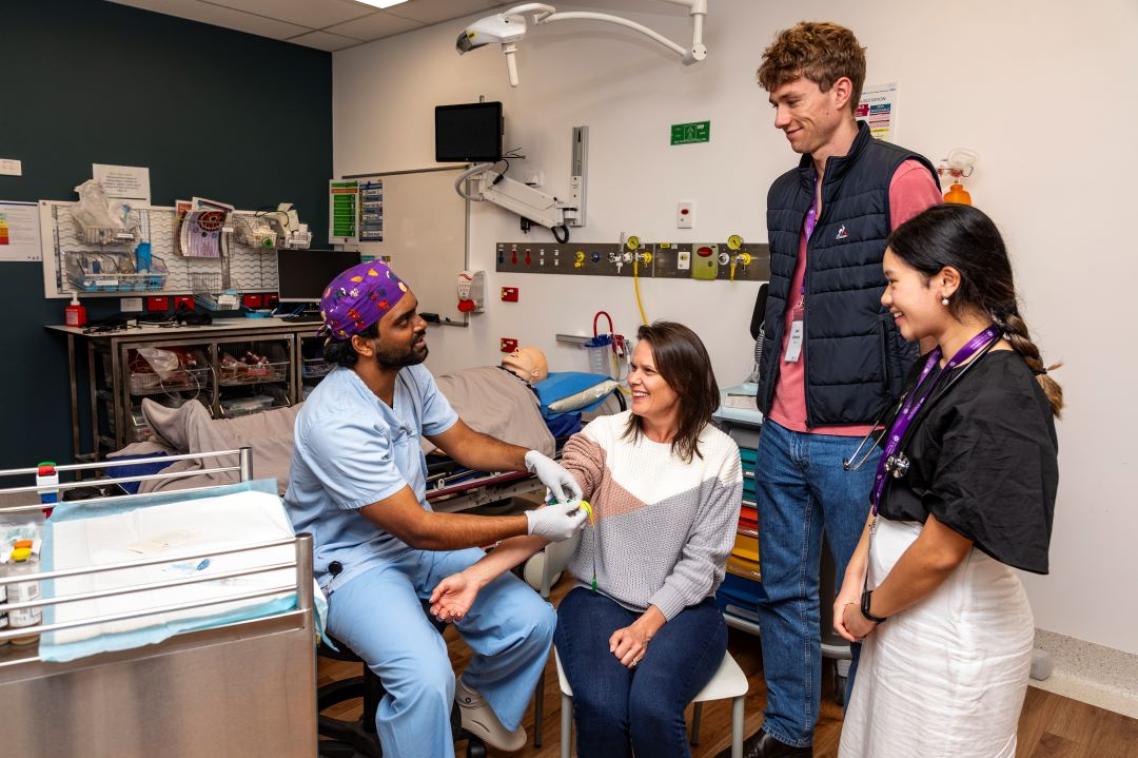Do you know how to treat a broken arm?
In the wake of Ben Ross’s shocking broken arm live on The Footy Show last night (11 June), The University of Queensland Telerehabilitation Clinic has issued simple steps for those witnessing similar injuries.
Clinic manager Lauren Harms, an accredited physiotherapist from the School of Health and Rehabilitative Sciences, said immediate action could be taken by bystanders.
It has been reported former State of Origin forward Ross suffered a broken right humerus in a charity arm-wrestling competition with fellow ex-footballer Wendell Sailor.
“It was certainly nasty. Whether he has also torn muscle from the bone will affect the type of surgery performed,” said Ms Harms.
“The prescribed rehabilitation will therefore vary depending on the surgery, but there are clear procedures people can take to treat somebody with a broken arm.”
The suggested steps are as follows:
- Calm the patient and have them sit in a supported chair.
- Call Triple Zero (000) so they can administer pain relief and transport the patient comfortably.
- In the case of a compound fracture where the bone is protruding from the skin (which did not occur to Ross), stem the blood flow. Firm compression should be applied with a clean gauze or fabric. You can make a donut shape with material to put around the protruding bone.
- If not a serious fracture, transport to nearest health care provider.
- Immobilise the affected area using a splint or sling, or have the patient support the broken arm with their other arm.
While Ross had immediate assistance to hand, the recently opened UQ Telerehabilitation Clinic (TRC) helps those caught in situations where access to health care is more problematic, such as for immobile or rurally-based people.
“The TRC could assist in physiotherapy and/or occupational therapy consultation for rehabilitation of the injury,” said Ms Harms.
“This could include ways to reduce pain and swelling initially, followed by exercises to improve range of motion and strength.
“The priority after surgery would be returning the patient to maximal functioning ability.”
Contact +617 3365 2232 or healthclinics@uq.edu.au for more information on the centre’s clinical services.
Media: Ms Lauren Harms +617 3365 3081, l.harms1@uq.edu.au; UQ Communications Robert Burgin +617 3346 3035, +61 0448 410 364, r.burgin@uq.edu.au.
Topics
Related articles

Life on the land: Country program key to addressing rural doctor shortages

Coercive control puts children at risk of mental illness later in life
Media contact
UQ Communications
communications@uq.edu.au
+61 429 056 139
